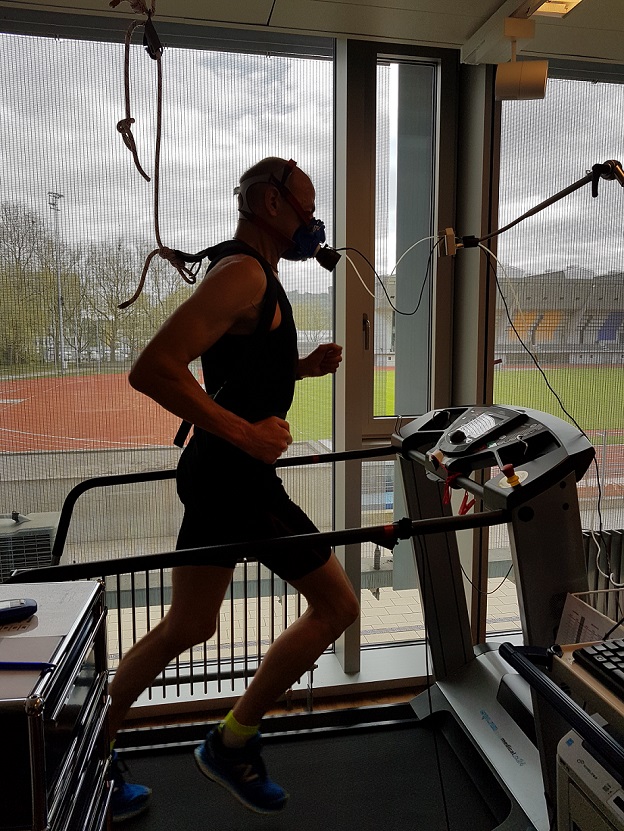How to set your Heart rate training zones?
What are heart rate training zones and how are they used in your daily training?
Knowing the different heart rate training zones that you should apply play a crucial role. Endurance athletes train many hours to reach their peak level at different heart rate ranges of intensity.
So, there are various possibilities to control the intensity of your training. The most practical is using a heart rate monitor. This is helpful at the beginning when you are often clueless at what intensity you exercise.
Today most athletes practicing endurance sports use a heart
rate monitor to receive important data.
I have used a pulse watch right from the beginning when they first came on the market decades ago. And even today, I use a device of the same brand to do my daily training.
For you as an endurance athlete, a watch that shows your pulse frequency is very useful and important. It verifies the cardiac response during your aerobic exercise.
To use a pulse watch to check your heart rate training zone, you need to know first your maximum heart rate. This depends on your gender to get the exact data.
The simplest way to figure that out is using the number 220 minus your age in years. Yet, this formula isn't very accurate and above all inappropriate for women. In fact, research shows that all formulas overestimate the maximum heart rates for women.
How
to calculate your maximum heart rate during a laboratory test
 VO2 max testing in a sports medicine lab
VO2 max testing in a sports medicine lab
The most accurate way to calculate maximum heart rate is to take a laboratory test, also known VO2 max test. This test analyses your physiological capabilities and pushes you to your absolute limit.
The protocol for you as an endurance athlete is quite simple. You are either running, biking, rowing or roller skiing on a treadmill until complete exhaustion.
For example when running on a treadmill, the speed at the start could be 9 km/hr and then increased every 3 minutes by 1.2 km/hr.
Cross country skiers get either tested on a running treadmill or on a special roller ski treadmill.
At the end of each 3-minute stage, a physiologist takes a 40-micro l blood sample at the fingertip. They also take a 25-micro 1 sample to analyze the whole blood concentration.
Throughout the test a lot of data is gathered about your current fitness. This includes oxygen intake, speed of lactate build-up, your max heart rate, and a lot of other data.
Additionally, you will know your aerobic, anaerobic and lactate thresholds. It's a lot of useful data that helps you train better and tells you need to adjust or change something.
A VO2 max test is always supervised by sports physiologists, which is an advantage and saver over a field test. It pushes you to your limit and determines your physiological capability. From such a test, you get the data and know exactly the heart beat range of the different heart rate training zones.
How to take your maximum heart rate with a field test
Before you attempt to do a field test, you should make sure you have a solid aerobic base. By that I mean that you did regular training over several months before you push your body to your limit.
The field test is of value for experienced athletes who train on a regular basis. If you are a beginner athlete, you are most likely not ready yet for such a demanding test.
There are 2 ways to do a field test after proper warm-up:
1) Start by running up a road that is at least 3k long. Increase your running speed 3 minutes until you are fully exhausted. Now take your pulse on your wrist and count for 6 sec. Multiply the result by 10 and that’s your max heart rate.
2) Run fast for 2 minutes and then recover for 1 minute. Repeat until you have reached your max speed and take your pulse.
Once you know your maximum heart rate, you very easy to figure out your heart rate training zones. They are divided into 5 zones. There are variations like 3 zones or as high as 7 zones.
I like things as simple as possible, so I use the 5-zone model:
Intensity training zone 1: Very easy long-distance training
55 – 72% of max HR / 0.8 – 1.5 mmol/L lactate
This is the so called “Bad-Conscience-Pace”. Those training sessions are 2-3 hours long and very slow. It corresponds to comfortable jogging, in flat terrain.
It enlarges the heart volume and the circulation of the working muscles. And it also economizes the fat metabolism. In shorter training sessions, the heart rate training zone 1 serves to support the regeneration processes. For ex: after hard intervals.
It also compensates high intensities in strength training.
And the warm-up and cool-down for high intensity interval training sessions and
competitions.Most of your training should be in this heart rate training zone.
Intensity training zone 2: Easy long-distance training
73 – 82% of max HR / 1.5 – 2.5 mmol/L lactate
The intensity is a bit higher than in zone 1 and has so greater involvement of the carbohydrate metabolism. These are still long and regular sessions in flat or easy rolling terrain.
This is the pulse range where your fat metabolism occurs. It’s a very important intensity for all endurance sports, not only running. Training sessions of 1 – 2 hours is still possible in zone 2.
Intensity training zone 3: Development of Basic- and
Strength Endurance
83 – 87% of max HR / 2.5 – 4.0 mmol/L lactate
Zone 3 is the foundation to strengthen your medium (speedy) endurance runs. To that belongs moderate Swedish fartlek in more demanding terrain.
It develops your basic endurance as well as your strength endurance. It also improves your aerobic and anaerobic threshold speed. Athletes on the threshold training model do a great part of their workouts in the heart rate training zone 3.
It's the pulse range in which most runners would train if they don't follow a training plan. This pace has a particularly positive effect for beginners.
But, in the long term, a combination in zone 1 and 2 and later also in zone 4 is preferable. You gain a lot more by training easy most of the time and hard only 1 - 2 times a week.
Intensity training zone 4: Fast distance runs – Intervals or fartlek
88 – 92% of max HR / 4.0 – 6.0 mmol/L lactate
The heart rate training zone 4 improves your speed and tempo stability. Training in this pulse range is stuff, but if you do it right, it will improve your fitness faster.
It activates your large and dense mitochondria and also economizes your mixed metabolism. You can also improve your lactate buffer systems and develops your VO2max.
You do it by fast endurance runs, intervals or Swedish fartlek. You should also use it very limited and only if you have been training over a longer time.
The zone 4 intensity is in the range of aerobic - anaerobic threshold or your maximal running speed. This could be a fast 10k rail run or an intensive roller ski session up a mountain.
Intensity
training zone 5: Very hard intervals
93 –
97% of max HR / 6.0 – 10.0 mmol/L lactate
Training at this intensity is very hard. I don't recommend it until you have reached a certain level of fitness.
Zone 5 is for your high intensity intervals that last under five minutes. That means that you should not be able to continue for any longer.
Interval training in this zone leads to many physiological changes. This includes an increase in your cardiovascular efficiency. It also improves the ability to deliver oxygen to your working muscles. And an increased tolerance to the build-up of lactic acid.
Zone 5 high intensity interval training recruits your fast twitch muscle fibers.
Note: Exercise in zone 5 (high-intensive interval training) is of no importance in health sports.







